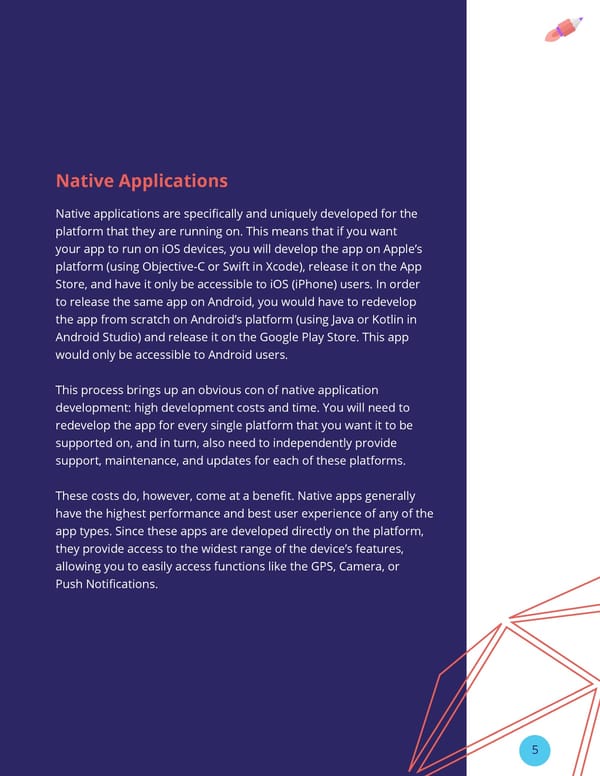Native Applications Native applications are specifically and uniquely developed for the platform that they are running on. This means that if you want your app to run on iOS devices, you will develop the app on Apple’s platform (using Objective-C or Swift in Xcode), release it on the App Store, and have it only be accessible to iOS (iPhone) users. In order to release the same app on Android, you would have to redevelop the app from scratch on Android’s platform (using Java or Kotlin in Android Studio) and release it on the Google Play Store. This app would only be accessible to Android users. This process brings up an obvious con of native application development: high development costs and time. You will need to redevelop the app for every single platform that you want it to be supported on, and in turn, also need to independently provide support, maintenance, and updates for each of these platforms. These costs do, however, come at a benefit. Native apps generally have the highest performance and best user experience of any of the app types. Since these apps are developed directly on the platform, they provide access to the widest range of the device’s features, allowing you to easily access functions like the GPS, Camera, or Push Notifications. 5
 The Non-Technical Founder's Guide to Building an App | CrowdBotics Page 4 Page 6
The Non-Technical Founder's Guide to Building an App | CrowdBotics Page 4 Page 6